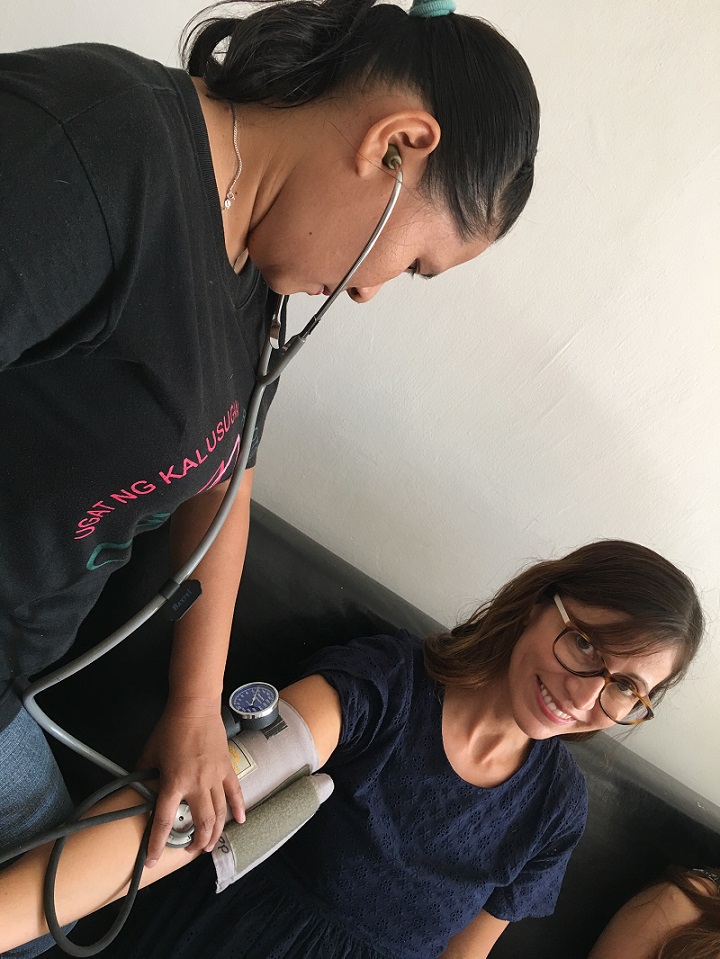In 2013 I attended the Women Deliver conference in Kuala Lumpur and was invited to attend a special info session on a hormonal contraceptive implant called Implanon. I remember feeling a bit queasy as they showed us the matchstick-like implant and demonstrated how it was inserted under the skin of a woman’s arm. Implants are extremely effective at protecting against unplanned pregnancy, and the Philippines Department of Health was getting ready to launch a big push to provide this form of contraception to women in the Philippines. As my colleagues and I discussed it afterwards, I predicted that this would never fly in the Philippines, and that I didn’t think anyone would want it.
I couldn’t have been more wrong.
As soon as it was offered, thousands of Filipinas got implants. So many that conservative groups took notice. After legal maneuvering of the Catholic Church and its allies (TRO, legal challenges), Filipinas weren’t given access to government-purchased implants for many long years. However, during this time, privately operated nonprofits like mine provided implants to women and girls who wanted to space or limit their pregnancies.
Once we started providing implants in Palawan, they quickly started to gain popularity. During our first trip to an isolated community on the remote island of Balabac, our staff brought 20 implants with them, and we thought perhaps that was too many. We found that once our team had explained what the implant was and how it worked, many of the women there wanted one, and we hadn’t brought enough. Fast forward to about a year after that first trip offering it, and our team couldn’t insert these fast enough! One 3-day trip to the municipality of Taytay yielded over 800 women and girls waiting in line to get their own. Another 4-day trip to Bataraza yielded over 1,000 ladies who had implants inserted.
Most women were initially nervous about getting one, but once they understood its properties and how it worked, they were very likely to choose one for themselves. It is very appealing to not have to worry about taking a medication or using a condom for 3 years. And it is much less invasive to offer up one’s arm for a minor procedure than it is to have to go to a private space, undress, and let a health professional insert an IUD into one’s vagina.
My initial queasiness at the idea of having a plastic rod in my arm lasted a while longer, but in April 2017 I got an implant of my own. I made the decision because I had been on pills for several years and often forgot if I had take them or just plain forgot to take them. I knew I didn’t want another pregnancy so it made sense. The clincher for me was learning that many women with implants stop having periods. I hate having a period so that made my decision easier. I haven’t had to worry about an unplanned pregnancy for nearly two years now.
My implant isn’t perfect. When I first got it, it affected my skin and I got pretty bad acne on my cheeks and my shoulders. I went to my dermatologist complaining, and she suggested I have the implant removed. I decided I could bear with bad skin for a bit and gave my body more time to adjust. Eventually my skin cleared up. Unfortunately, I’m not one of the many women with implants who never gets a period. My period now is generally lighter than it was before, but it is very irregular. Sometimes I have spotting for 2 weeks straight. Other times I won’t have anything for months. It is definitely annoying, but I have kept mine in because I much prefer it to my pills, and I’m not willing to risk an unplanned pregnancy.
Roots of Health is currently conducting outreach events in various places around Puerto Princesa and in El Nido on March 30th. If you’re interested in an implant, please come to one of our sessions, drop by our clinic, message us on Facebook or send me a note. We’re happy to provide information so everyone can make their own informed decisions.
Frequently Asked Questions:
Hormonal Implant (Implanon)
What is it?
- The birth control implant is a thin, flexible plastic implant about the size of a matchstick. It is inserted under the skin of the inner upper arm.
How it works to prevent pregnancy:
- The birth control implant releases a hormone (progestin). The progestin tricks the body into thinking it is pregnant. The body keeps the eggs from leaving the ovaries. Pregnancy cannot happen if there is no egg to join with the sperm. Progestin also makes a woman’s cervical mucus thicker. This keeps sperm from getting to the eggs.
How long is it effective?
- Up to three (3) years
Advantages:
- The ability to become pregnant returns quickly when you stop using the implant.
- It can be used while breastfeeding.
- Women who cannot take estrogen can use it.
- It gives continuous long-lasting birth control without sterilization.
- There is no medicine to take every day.
Possible risks or side effects:
- Irregular bleeding especially in the first 6–12 months of use.
Best for:
- Women who want at least a 3-year break in child-bearing.
Not recommended for:
- Women who have breast cancer.
If I don’t like it can I have it removed before three years are up?
- Yes. Anyone who wants to remove their implant at any time can come to our clinic to have it removed free of charge, and free of judgment.



